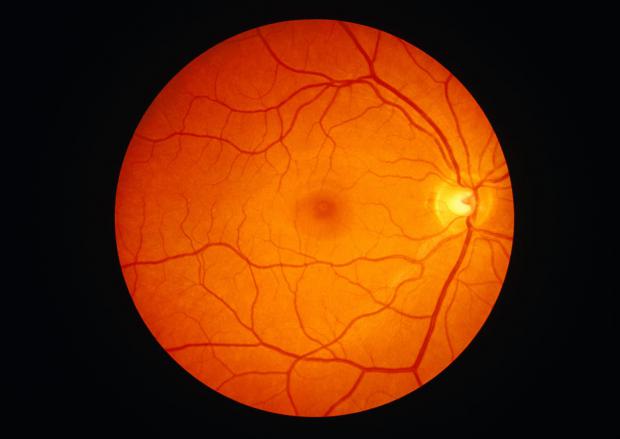
Breaking News
 In this day Oct 14, 2024, NASA launched Europa's Clipper
In this day Oct 14, 2024, NASA launched Europa's Clipper
 HOLY SH*T! More Subprime Lenders Just Collapsed (Something BIG Is Happening)
HOLY SH*T! More Subprime Lenders Just Collapsed (Something BIG Is Happening)
 A short history of Israel breaking ceasefires w/Max Blumenthal
A short history of Israel breaking ceasefires w/Max Blumenthal
 Kennedy dismantles public health dogmas…
Kennedy dismantles public health dogmas…
Top Tech News
 Graphene Dream Becomes a Reality as Miracle Material Enters Production for Better Chips, Batteries
Graphene Dream Becomes a Reality as Miracle Material Enters Production for Better Chips, Batteries
 Virtual Fencing May Allow Thousands More Cattle to Be Ranched on Land Rather Than in Barns
Virtual Fencing May Allow Thousands More Cattle to Be Ranched on Land Rather Than in Barns
 Prominent Personalities Sign Letter Seeking Ban On 'Development Of Superintelligence'
Prominent Personalities Sign Letter Seeking Ban On 'Development Of Superintelligence'
 Why 'Mirror Life' Is Causing Some Genetic Scientists To Freak Out
Why 'Mirror Life' Is Causing Some Genetic Scientists To Freak Out
 Retina e-paper promises screens 'visually indistinguishable from reality'
Retina e-paper promises screens 'visually indistinguishable from reality'
 Scientists baffled as interstellar visitor appears to reverse thrust before vanishing behind the sun
Scientists baffled as interstellar visitor appears to reverse thrust before vanishing behind the sun
 Future of Satellite of Direct to Cellphone
Future of Satellite of Direct to Cellphone
 Amazon goes nuclear with new modular reactor plant
Amazon goes nuclear with new modular reactor plant
 China Is Making 800-Mile EV Batteries. Here's Why America Can't Have Them
China Is Making 800-Mile EV Batteries. Here's Why America Can't Have Them
A Neuralink Rival Says Its Eye Implant Restored Vision in Blind People

For years, they had been losing their central vision—what allows people to see letters, faces, and details clearly. The light-receiving cells in their eyes had been deteriorating, gradually blurring their sight.
But after receiving an experimental eye implant as part of a clinical trial, some study participants can now see well enough to read from a book, play cards, and fill in a crossword puzzle despite being legally blind. Science Corporation, the California-based brain-computer interface company developing the implant, announced the preliminary results this week.
When Max Hodak, CEO of Science and former president of Neuralink, first saw a video of a blind patient reading while using the implant, he was stunned. It led his company, which he founded in 2021 after leaving Neuralink, to acquire the technology from Pixium Vision earlier this year.
"I don't think anybody in the field has seen videos like that before," he says.
Dubbed the Prima, the implant consists of a 2-mm square chip that is surgically placed under the retina, the backmost part of the eye, in an 80-minute procedure. A pair of glasses with a camera captures visual information and beams patterns of infrared light on the chip, which has 378 light-powered pixels. Acting like a tiny solar panel, the chip converts light to a pattern of electrical stimulation and sends those electrical pulses to the brain. The brain then interprets those signals as images, mimicking the process of natural vision.
There have been other attempts to restore vision by electrically stimulating the retina. Those devices have been able to produce spots of light called phosphenes in people's field of sight—like blips on a radar screen. They're enough to help people perceive people and objects as whitish dots, but it's far from natural vision.
One of these, called the Argus II, was approved for commercial use in Europe in 2011 and in the US in 2013. That implant involved larger electrodes that were placed on top of the retina. Its manufacturer, Second Sight, stopped producing the device in 2020 due to financial difficulties. Neuralink and some others, meanwhile, are aiming to bypass the eye completely and stimulate the brain's visual cortex instead.
Hodak says the Prima differs from other retinal implants in its ability to provide "form vision," or the perception of shapes, patterns, and other visual elements of objects. What users see isn't "normal" vision though. For one, they don't see in color. Rather, they see a processed image with a yellowish tint.
The trial enrolled people with geographic atrophy, an advanced form of age-related macular degeneration, or AMD, that causes gradual loss of central vision. People with the condition still have peripheral vision but have blind spots in their central vision, making it difficult to read, recognize faces, or see in low light.

 China Innovates: Transforming Sand into Paper
China Innovates: Transforming Sand into Paper

